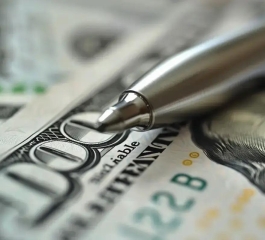Emergency reserve investments are vital for protecting us against unforeseen events and guaranteeing us financial security. Yet many people don't know where to invest this money. Let's explore the best options and understand how to build up your emergency reserve efficiently.
What is an Emergency Reserve?
Before talking about investments, it's essential to understand what an emergency reserve is. Basically, it works like an financial cushion for unexpected situations such as accidents, layoffs or unplanned expenses.
Having an emergency reserve means being prepared for the worst, maintaining a financial cushion to ensure that you or your family are not caught unawares by a crisis.
Why is it Important to Have an Emergency Reserve?
Sempre me pergunto: o que aconteceria se eu perdesse meu emprego amanhã? Ou ficasse doente e não pudesse trabalhar?
Nesses momentos, uma reserva de emergência pode fazer toda a diferença. Ela permite cobrir despesas essenciais sem precisar recorrer a empréstimos ou aumentar dívidas no cartão de crédito.
It's a way of protecting yourself and maintaining peace of mind, knowing that you have a dedicated crisis fund.
Who Should Have an Emergency Reserve?
The answer is simple: all. Whether you're an employee, self-employed or an entrepreneur, unforeseen events can happen to anyone. Having this fund is crucial to avoiding financial problems in the future.
But self-employed people in particular, who don't have a guaranteed fixed income, need a reserve even more to cover periods without financial input.
Emergency Reserve Investments
Now to the main point: where to invest your emergency reserve?
To choose the right investment, we must consider three essential characteristics: security, liquidity and low risk. Here are some alternatives:
Selic Direct Treasury
THE Selic Treasury is one of the best options for an emergency reserve. It has high liquidity, allowing quick redemptions in case of need.
What's more, it's a safe investment because it's guaranteed by the federal government. In other words, even in times of crisis, the chance of losing money is minimal.
Bank Deposit Certificates (CDBs)
The CDBs with daily liquidity are another excellent alternative for an emergency reserve. These bonds also offer good returns and allow quick redemptions.
By investing in CDBs, you are in effect lending money to the bank, which pays you interest for it. It's a safe and practical option.
DI Funds
The DI Funds invest mainly in low-risk public and private bonds. They are suitable for those looking for a safe investment with good liquidity.
You can redeem the money easily and they generally earn higher returns than savings accounts.
Savings
The classic savings is one option, but not the best. Despite its security and liquidity, its return is generally lower than inflation.
Still, if you're just starting out, it can serve as a first step until you're more familiar with other options.
How to build up your emergency reserve
To set up your reservation, first calculate your essential monthly expenses (rent, food, transportation, etc.).
The ideal is to have a reserve that covers between 6 and 12 months of these expenses.
Then choose one or more of the investments mentioned to invest in. Diversification is a good practice for balancing security and profitability.
Conclusion
Setting up an emergency reserve is essential to guarantee your financial security in times of unforeseen circumstances. Choosing the right investments, such as Selic Treasuries, CDBs with daily liquidity and DI Funds, is crucial to keeping this fund safe, liquid and with a good return.
Don't underestimate the importance of this financial cushion. Start small, saving a little every month, and gradually build up a solid reserve.
Frequently Asked Questions
What is an emergency reserve?
It is a financial fund intended to cover unforeseen events such as accidents, layoffs or unexpected expenses. It serves as financial security for times of crisis.
How much should I have in my emergency reserve?
Ideally, you should have a reserve that covers between 6 and 12 months of your essential expenses, such as rent, food and transportation.
Can I use savings as an emergency reserve?
Yes, but it's not the best option. Savings have low returns and may not outpace inflation, reducing the purchasing power of your money over time.
Is the Selic Treasury a good option for an emergency reserve?
Yes, the Selic Treasury is one of the best options due to its high liquidity and security, being guaranteed by the Federal Government.
Are DI funds safe for emergency reserves?
Yes, DI Funds are safe and offer good liquidity. They invest in low-risk securities and generally offer higher returns than savings accounts.
How do I diversify my emergency reserve?
You can diversify by investing in different types of assets such as Selic Treasuries, CDBs with daily liquidity and DI Funds. This helps to balance security and profitability.
Did you like this amazing content? If so, share it with your friends and on your social networks. See exclusive and free content daily on our website. News Blog and take the opportunity to follow our Google News Channel. Thanks!


